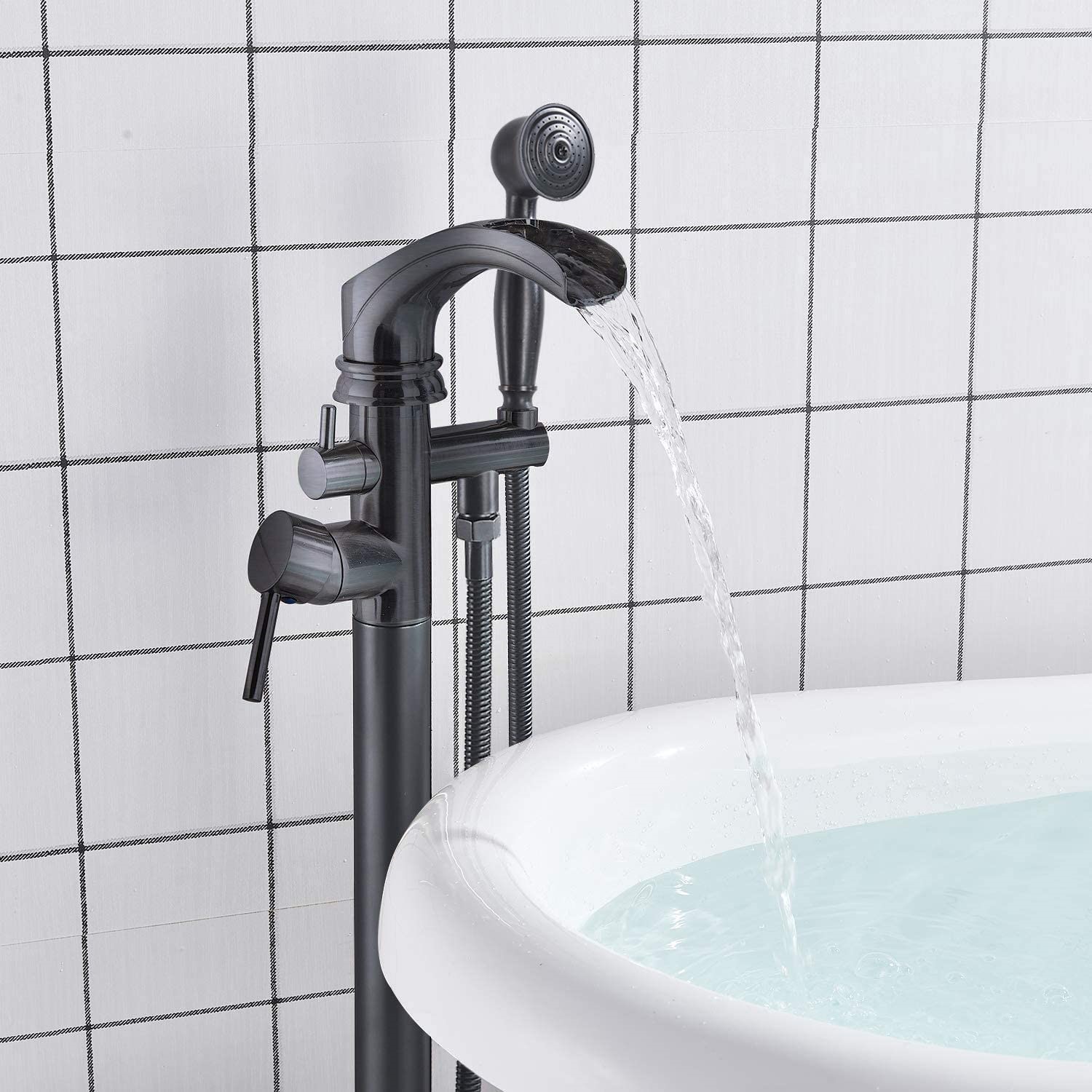The dripping noise in your bathroom is a sure-shot sign of a leaky bathtub faucet, and it’s the time to chase and fix it!
As per a report, leaky faucets result in a wastage of thousands of gallons of water every year, and you might have seen its impact on the surging water bills.

Most folks think that fixing a leaky faucet is a task only a plumbing guy can handle! Well, you don’t need a lot of plumbing expertise to repair a leaking freestanding tub filler.
Here are the essential steps to follow to ensure the faucet doesn’t leak anymore.
Before I hop on explaining the steps of how I fixed a running faucet, it is essential to understand why a faucet leaks. Even if you have a brand-new bathtub faucet, it may leak due to faulty installation and loose O-rings and washers.
Other such reasons include mineral build-up, wear and tear, and corrosion. Now let’s get back to the steps to fix a leaky faucet.
You need the following tools and accessories before getting started with the final process:
If you don’t want to get hit by a shower of water, turn the water supply off before getting started. Find the main water line connecting to the bathtub faucet, and turn it off.
After turning off the main supply, turn the bathtub faucet on and let the remaining water flow down the drain.
Read Also:
Unscrewing the faucet means removing the handle and finding the inner mechanism which is responsible for leaks.
Remove the decorative cap attached to the rotatable handle. Once you remove the cap, you will see a screw holding the valve with the faucet mechanism.
Use a screwdriver to remove the valve in order to inspect the washer and other components. If you see corrosion on the screw, use some oil for lubrication purposes.
Never force open the handle, as the faucet can break down, and I hope you don’t want that.
After removing the inner valve from the faucet, inspect it properly to find out any issues. Check the O-rings and the seals to make sure that there is nothing wrong with them.
Now scrutinize the faucet stem and washer. In most cases, the washer is responsible for leaks because it loses its place due to friction caused by rotating the handle.
After inspecting all the components properly, replace what’s required. Here are some steps to replace the washer or the faucet stem.
You will find a rubber seal at the top of the faucet’s stem. It is known as the faucet’s washer that holds the water when you turn the faucet off.
So, there is nothing wrong with the washer, but the water is still running after replacing the washer? Well, there may be something wrong with the faucet’s stem.
Replacing the stem can be a challenging task, but you can do it with the following steps:
With all the above-mentioned tips, it’ll be easy for you to fix a leaky bathtub faucet. In case if the faucet is still dripping, then it is time to call a plumber to get the issue resolved.
Or if you think the faucet is too old and is beyond a repairable condition, it’d be great to invest in the best freestanding tub filler.
Lastly, make sure to wear protective gloves to ensure that your hands don’t get dirty when handling the wrench or other such tools.
Author Bio:
Hello, this is Richard, working as a Sr. Editor for BathAdvisors. I assist the writers in creating article outlines, structural edits, and proofreading. I also contribute to BathAdvisors through my blog posts. I spend my pastime reading books and gardening.